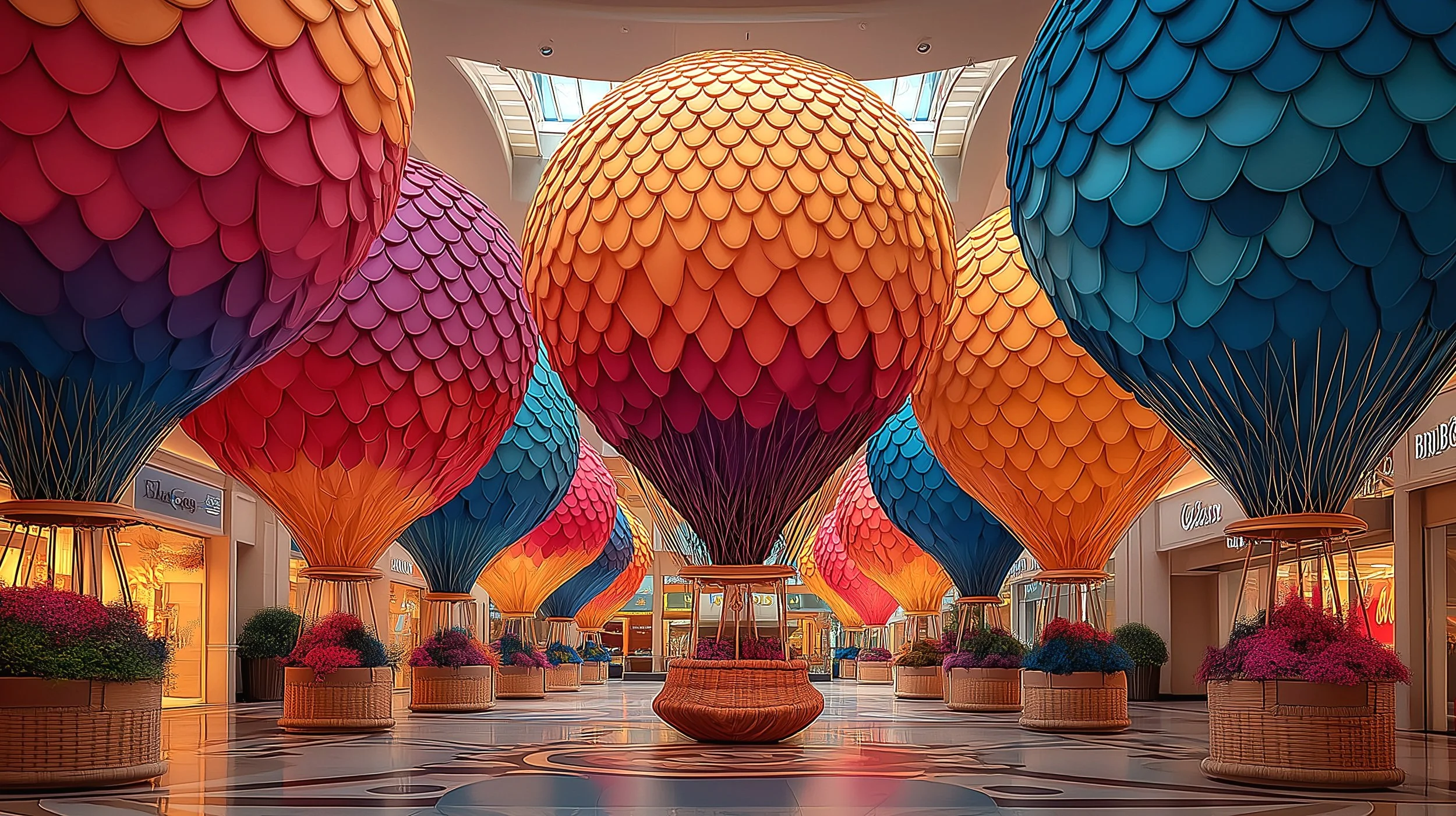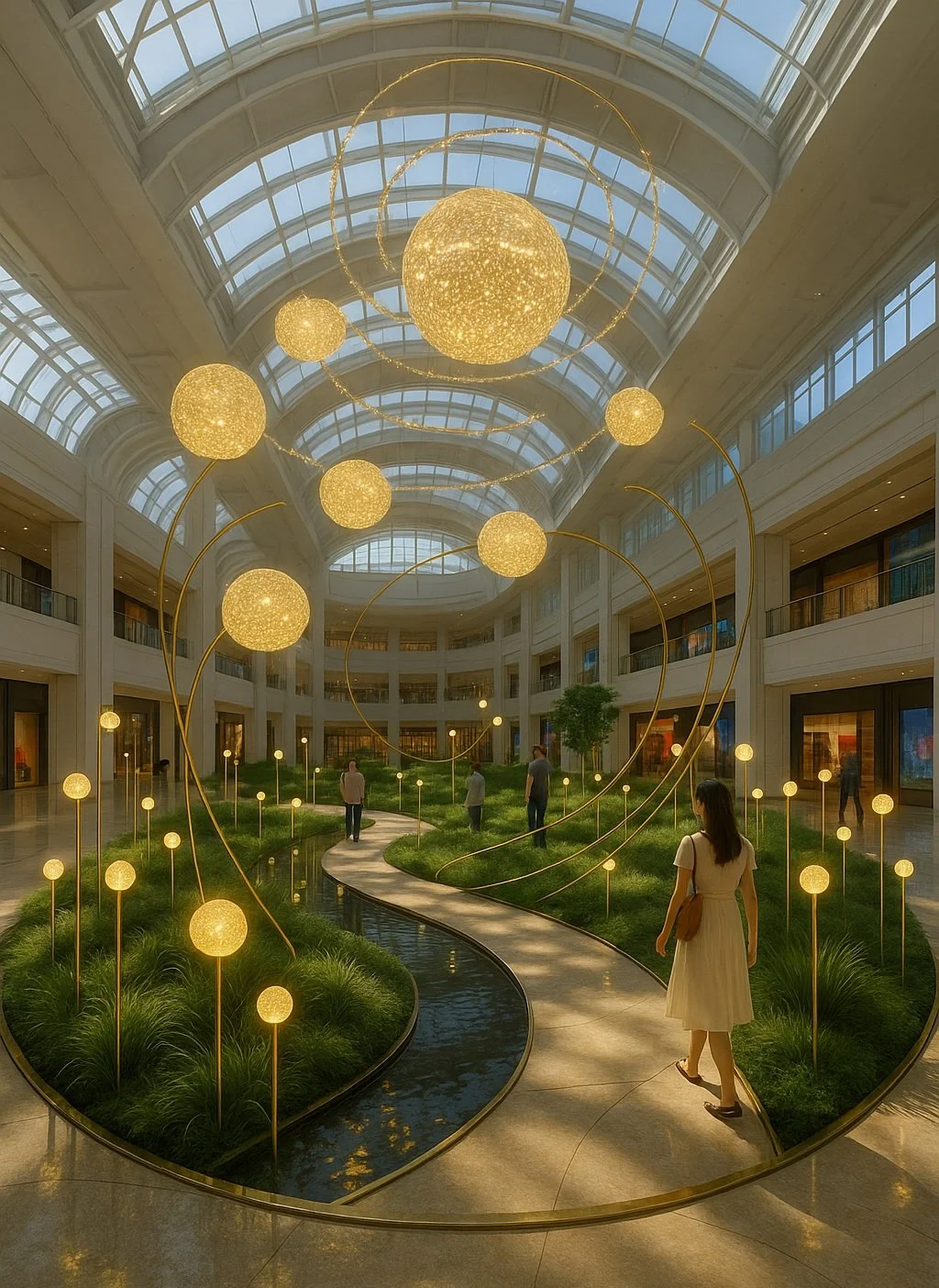Why AI is Reshaping How Designers Win Client Buy-In
A vision that can be understood by and shared with your client brings trust.
Exhibition and experience design is no longer about pulling rabbits out of hats. Today, our role has evolved. We're not just the creators of beautiful visuals, we're the translators between creative vision and client clarity. And the faster we help clients see what we mean, the faster they can believe in the idea and back it with confidence.
This is where generative AI comes in to support better communication between concept and decision, designer and client.
How Client Expectations Are Evolving
It’s no longer unusual to receive a project brief on Thursday with a fully developed proposal due by Tuesday. Or to be asked to create eight schematic directions in just one week. Clients are moving faster and they expect us to keep pace.
But here’s what’s changed: many clients now understand that AI can save time. In fact, some are specifically requesting we “use AI only” for the early phase, not because they want less, but because they value focus.
I’ve seen this shift most in global clients who are willing to challenge outdated workflows. They’re not asking for less creativity. They’re asking for a clearer path to commit to it—so they can move faster with us.
The Old Way vs. The New: Why Generative Design Accelerates Ideation
Previously, the first week of a project might go to basic research and moodboards, followed by rushed sketches or white models. There was little room to dig into meaningful content or strategy before presenting the first idea.
Now, with generative design tools, we can:
Research strategic themes or historical narratives in-depth
Create visual prompts to test ideas early
Share multiple visual directions to invite feedback
Show ideas from different angles to gain faster approval
This isn’t watering down our process, it’s enhancing it so the client can make informed, confident decisions earlier.
Why Fast Ideation Helps Clients Say Yes Sooner
We all know the longest delay in design is usually not the execution. It’s getting a team to commit to a direction. Logo changes, spatial tweaks, presentation approvals—these can derail momentum for weeks.
AI lets us:
Create low-effort visual mockups to quickly test ideas
Get early client buy-in before we build 3D scenes
Show alternatives that make final choices easier
One client recently told me they finally understood a spatial theme simply because the AI-generated visualization gave them the clarity they needed.
That’s not just a win for efficiency. That’s a win for connection.
It helps to visualize within a real setting to help your client envision their own space. Here I used real site photos to direct the creative vision backed by research on the principles of symmetry and historical gardens around the world.
What Happens When Clients Can Finally See What You See?
In the past, you’d show a polished render and hear, “Where am I standing?” Or you’d spend a week on a floor plan and be told, “I don’t get it.” That’s not on the client—that’s on us, for not communicating in a way they could understand.
Generative visuals remove this barrier. We can now show:
A thematic walkthrough before anything’s built
A mood-rich scene that captures intent
Even a “bad” idea quickly, to rule it out together
This speeds up the feedback loop, reduces risk, and builds trust.
AI Isn’t Replacing Us, It’s Helping Us Be Better Communicators
If you think embracing AI is about giving up your design skill, think again. The clients asking me to lead AI-powered concept phases aren’t trying to cut corners. They’re trying to move forward—with me, not despite me.
The tools are available to everyone now. That means smaller studios and solopreneurs like me can deliver at the level of large agencies. The playing field is leveling, and the opportunity is real.
Creativity Needs Curiosity
You don’t need to drop your old methods. I still model in 3D when a project needs it. But you do need to expand your toolbox if you want to work with forward-thinking clients.
They’re not waiting for us to catch up—they’re already looking for designers who can move fast, visualize clearly, and communicate vision without friction.
And AI, used well, gives us exactly that.
Curious how to adapt your workflow for this new era of client communication?
I teach design professionals how to integrate AI into real-world creative processes, without sacrificing originality or quality. If you are curious to learn, see if the course programming speaks to you and if it does, feel free to sign up for my course waitlist for the next cohort.


